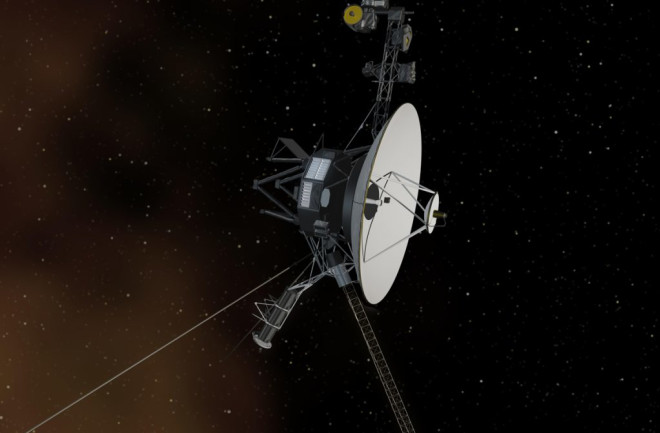1. High-Gain Antenna
SHUTDOWN DATE: Still active
PURPOSE: Communications
KEY FINDING: This is the craft’s main contact point with Earth. It once sent back the robust data from the craft; today, it sends out basic information from the low-power instruments still online.
2. Magnetometers and Low-Field Magnetometer
SHUTDOWN DATE: Still active
PURPOSE: Measure the magnetic fields of the Sun and the outer planets.
KEY FINDING: In 2015, the craft discovered that even past the heliopause, solar winds can redirect the magnetic field of charged particles they encounter.
3. Ultraviolet Spectrometer
SHUTDOWN DATE: 1998
PURPOSE: Monitor the composition of planetary atmospheres in ultraviolet wavelengths, which also show solar interaction.
KEY FINDING: This instrument gathered the bulk of the data regarding planetary atmospheres, helping establish what the gas giants were made of — and that Uranus and Neptune were different from Jupiter and Saturn in composition.
4. Infrared Radiometer, Interferometer, and Spectrometer (IRIS)
SHUTDOWN DATE: 1998
PURPOSE: Monitor temperature and other information inside the planets.
KEY FINDING: The IRIS instrument discovered a heat source deep within Neptune that leaves the planet roughly the same temperature as Uranus. This is likely due to slightly higher methane content trapping more heat and making the planet a few degrees warmer.
5. Photopolarimeter Subsystem (PPS)
SHUTDOWN DATE: 1991
PURPOSE: Gather information on the gas giants while monitoring their atmospheres.
KEY FINDING: The PPS instrument discovered a more detailed structure to Uranus’ and Neptune’s ring systems, including discovering additional rings in each.
6. Low-Energy Charged Particle Instrument
SHUTDOWN DATE: Still active
PURPOSE: Measure ions and their distribution in the outer solar system.
KEY FINDING: A violent burst of solar activity in 1993, coupled with the Low-Energy Charged Particle Instrument, helped researchers locate the heliopause (the boundary between the Sun’s solar wind and the interstellar medium).
7. Hydrazine Thrusters
SHUTDOWN DATE: Still active
PURPOSE: Propel the craft and keep it warm.
KEY FINDING: While Voyager 1 was in transit to the outer solar system, the Pioneer 11 craft revealed a substantial atmosphere on Saturn’s moon Titan. Rather than steer toward a possible encounter with Pluto, NASA used the craft’s thrusters to send it toward Titan, eventually flinging Voyager 1 above the plane of the solar system.
8. Micrometeorite Shield
SHUTDOWN DATE: Essentially never
PURPOSE: Protect the instruments at the rear of the craft from dust and other particles that could interfere with their operations.
KEY FINDING: Unknown, but it may have spared the craft plenty of headaches from tiny particles.
9. Optical Calibration Target
SHUTDOWN DATE: Still active
PURPOSE: Help calibrate the craft’s charged particle instrument, infrared radiometer, and cameras.
KEY FINDING: Voyager’s instruments pointed to the target plate for calibration countless times in its travels.
10. Planetary Radio Astronomy and Plasma Wave Antenna
SHUTDOWN DATE: 2008
PURPOSE: Measure radio emissions from the gas giants.
KEY FINDING: It measured radio waves from Jupiter and Saturn, resulting in a creepy album called Voyager: Sound of the Cosmos which makes Jupiter sound like even more of a monster.
11. Radioisotope Thermoelectric Generator
SHUTDOWN DATE: Still active, but waning.
PURPOSE: Power the craft and keep it warm with Plutonium-238.
KEY FINDING: It has allowed for the 28-year extended mission of both craft, though the radiation given off may drop too low to continuously power the craft past the early 2020s.

